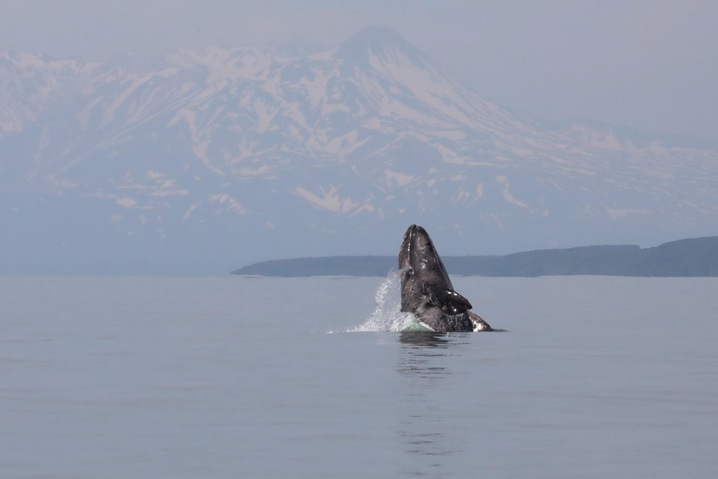The first gray whales with cubs reached the shores of Kamchatka after a grueling journey. Three maternal couples traveled about eight thousand kilometers from the coast of North America, where their babies were born from the end of December to the beginning of March this year. These sea giants belong to a rare Okhotsk population, which is under the close attention and special protection of the state, the press service of the Kronotsky Nature Reserve reports.

The pioneers of this season were a female, known to scientists under the code K151, and her newborn baby whale K231. Their meeting with the observers took place on June 12. It is noteworthy that the same female proved to be the leader last year, arriving with the offspring before the main group. As a rule, the mass approach of whale families to the Kamchatka waters is expected closer to the end of June and in July, said marine biologist of the Kronotsky State Reserve Evgeniya Volkova.
Observations show that the whales arrived in good health and look well-fed, which cannot be said about their mothers. Prolonged gestation, subsequent milk feeding, and energy-intensive migration severely depleted adult females. Now they will have to restore their vitality and fat reserves during the short summer feeding season in the forage-rich waters of Kamchatka.
Modern technologies come to the aid of scientists: using a quadcopter, they managed to capture the touching moments of feeding. “We watched as the cub ducked under the mother’s stomach and stayed there for a long time, while she “hung” in one place, hardly moving. We assume that the baby whale was fed with milk,” Evgenia Volkova shared the details.
Experts pay special attention to the need to observe a rest regime for arriving animals. It is strictly forbidden to approach females with cubs on tourist ships. Any anxiety can distract them from the vital process of feeding and recuperating during this critical period.
June in Kamchatka is not only a time of whale migrations. In the Kronotsky Nature Reserve, this is also the period of the birth of offspring from other rare species. “Newborn cubs of Red Book wild reindeer are already taking their first steps, which, in addition to the Kronotsky-Bogachev tundra, also come to the coast of the Kronotsky Bay. Thanks to the support of the Conservation of Ecological Systems of the Far East and Siberia Charitable Foundation, we have been able to observe these rare animals from the air, using drones, without causing them concern,” said Vsevolod Yakovlev, Acting Director of the Kronotsky State Nature Reserve.
The Okhotsk Sea, or western, gray whale population is considered one of the smallest and most vulnerable in the world, it has been assigned the status of critically endangered. Urgent measures are needed to save it, and at the end of 2024, the Russian Ministry of Natural Resources approved an appropriate Conservation Strategy. The issue of the Kamchatka wild reindeer population, listed in the Red Book of Russia, is no less acute. The only relatively large herd of these rare animals, numbering about 800 individuals, is now preserved exclusively on the territory of the Kronotsky Nature Reserve.